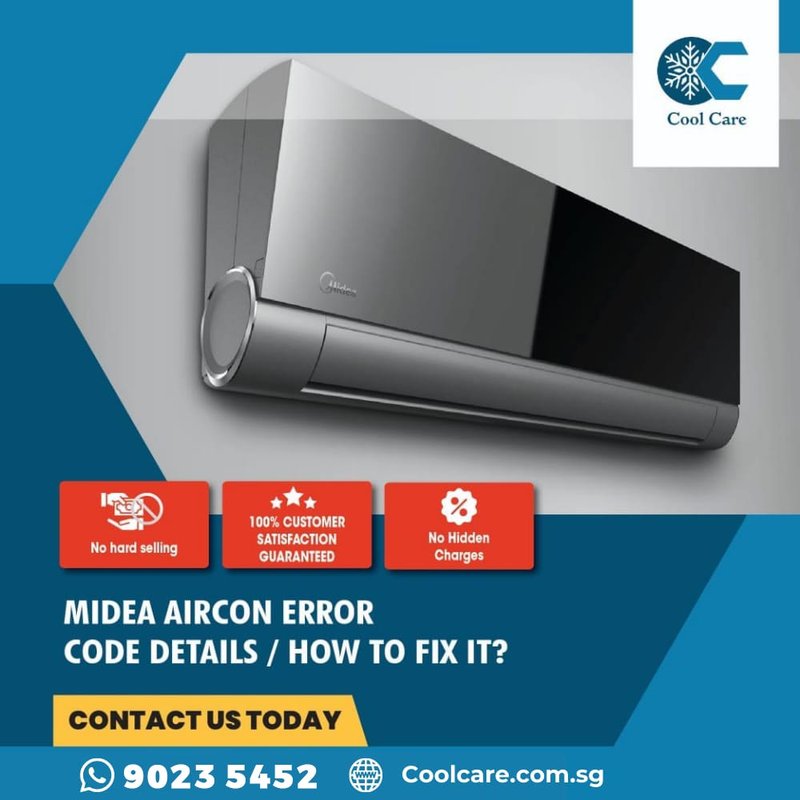
Error codes in air conditioners are like warning lights on your car’s dashboard. They signal that something isn’t quite right, and it’s time to pay attention. When your Midea AC displays the E2 error code, it’s essentially trying to communicate that there’s a hiccup somewhere in the system that needs addressing. Just like you wouldn’t ignore a flashing light in your car, you shouldn’t overlook this error either. But the big question remains: is it safe to keep using your AC with this error? Let’s dive in and find out.
Understanding the E2 Error Code
The E2 error code on a Midea air conditioner typically indicates an issue with the unit’s temperature sensor. Think of this sensor as the AC’s thermostat. It tells the unit when to cool and when to stop, much like how a traffic signal guides cars to stop or go. When this sensor isn’t working properly, the air conditioner might not cool effectively, or it might run erratically, stopping and starting at odd intervals.
The temperature sensor is crucial for maintaining a comfortable ambient environment. If it’s malfunctioning, your AC could either become a chilly iceberg or a barely functioning fan. The E2 error suggests that the sensor isn’t communicating correctly with the main control board of the AC unit. It’s like your GPS losing connection with the satellite, leaving you wandering off-route.
Here’s where the caution comes in: while an E2 error doesn’t usually mean an immediate danger like an electrical fault, it’s still not advisable to run the air conditioner without addressing the issue. Persisting in this condition might lead to inefficient cooling, higher energy bills, or further damage to the unit. So, although it might still work for a bit, it’s akin to driving with a flat tire; you won’t get far before things become problematic.
Common Causes of the E2 Error
So, what typically causes this pesky E2 error? First, it might be a simple case of the sensor being out of place. Occasionally, vibrations or minor impacts can dislodge the sensor, disrupting its connection to the control board. Imagine shaking a soda can – the contents might stay inside, but they’ve certainly moved around a bit.
Another common culprit is a defective sensor. Over time, wear and tear can take its toll on these components. This is much like an old light bulb that flickers before it eventually burns out. A faulty sensor might intermittently lose its ability to detect accurate temperatures, resulting in the E2 warning.
Lastly, wiring issues can also trigger this error code. The sensor relies on a network of wires to communicate with the AC unit. If these connections are frayed, loose, or damaged, it’s like trying to enjoy a concert with broken speakers – the message just doesn’t come through clearly. Identifying the exact cause can be tricky, but that’s where professional help can be invaluable.
Steps to Resolve the E2 Error
Okay, so you’ve got this E2 error, and you’re wondering what the next steps are. The good news is that with a little bit of know-how, you can often resolve this issue without too much fuss. Let’s walk through a step-by-step process.
First up, check if the sensor is out of place. This involves gently opening the front panel of the AC unit to locate the sensor. It should be secured in its designated spot. If you find it dangling or misplaced, carefully reattach it. It’s similar to putting a button back on a shirt – it’s about making things sit right again.
If reseating the sensor doesn’t fix the issue, it might be time to test the sensor itself. Unfortunately, if you’re not comfortable with electronics, this is where you might want to call in a professional. They can use a multimeter to check the sensor’s electrical resistance, ensuring it matches the specifications set by the manufacturer. If it doesn’t, a replacement might be necessary.
Lastly, inspect the wiring. Carefully look for any obvious signs of wear or damage along the sensor line. If you spot anything out of the ordinary, it’s best to have a certified technician handle the repair. Messing with electrical components without proper expertise is like trying to tune a guitar without ever playing one – you might end up causing more harm than good.
Preventative Measures to Avoid Future Errors
Now that you’ve tackled the E2 error, let’s talk about keeping it at bay in the future. Regular maintenance is the key to preventing not just E2 errors, but many common air conditioner issues. Just like a car needs its oil changed, your AC needs some occasional TLC too.
Start with routine cleaning. Dust and debris can build up inside the unit, affecting both sensors and overall performance. Keeping the interior of the unit clean ensures that all parts can function without unnecessary strain. You wouldn’t wear dirty glasses, right? The same goes for your AC.
Another tip is to schedule annual check-ups with a professional technician. They can perform a comprehensive inspection, catching potential problems before they turn into annoying error codes. It’s like visiting the dentist before a toothache – prevention is often easier (and cheaper!) than the cure.
Finally, be conscious of how you use your air conditioner. Avoid overstressing the unit by setting extreme temperature settings or running it non-stop. Just as you wouldn’t leave your car idling all night, your AC doesn’t need to work overtime either. Give it regular breaks, and it’ll thank you with consistent, trouble-free performance.
In conclusion, understanding and addressing an E2 error code promptly can ensure your Midea air conditioner continues to provide efficient and safe cooling. By taking the right steps when issues arise, and maintaining good habits, you’ll extend the life of your unit and enjoy comfortable temperatures for years to come.